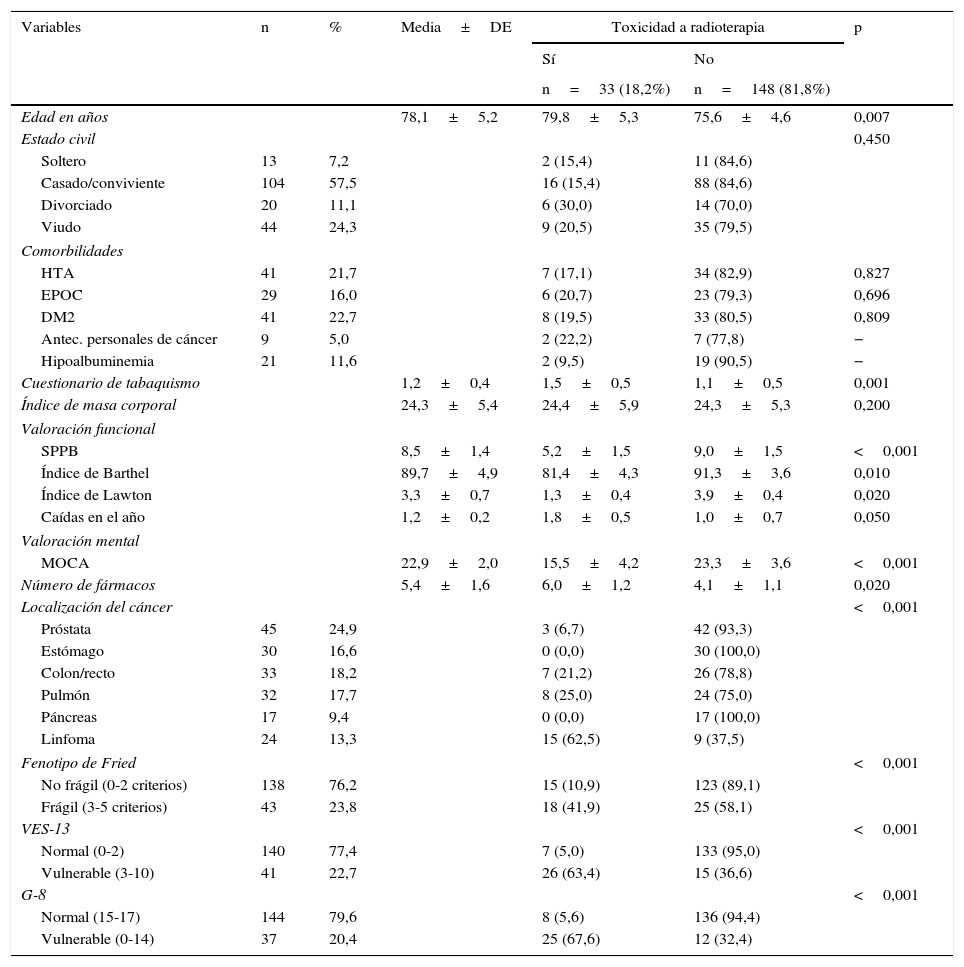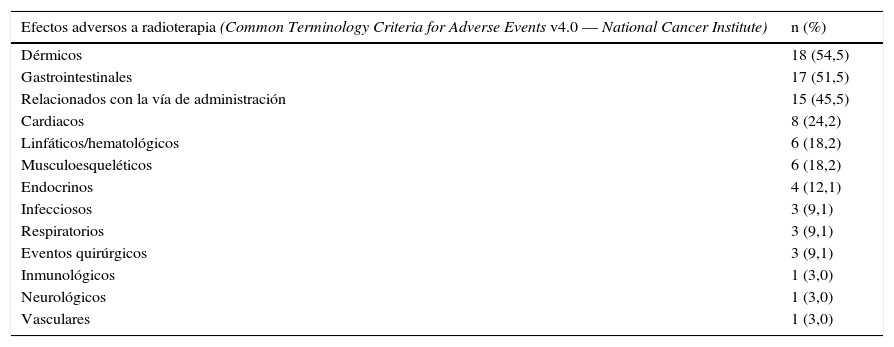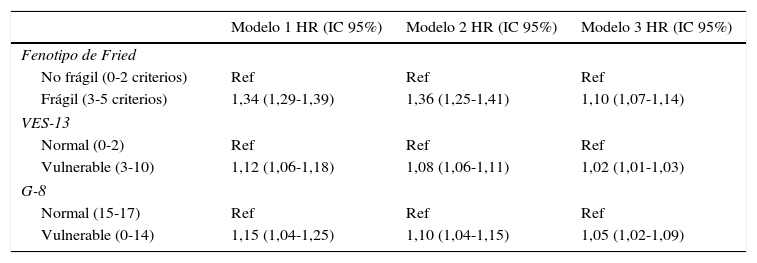Evaluar la asociación entre fragilidad/vulnerabilidad y el desarrollo de radiotoxicidad en adultos mayores en un hospital de Perú.
Material y métodosCohorte que incluyó pacientes con diagnóstico de cáncer e indicación de radioterapia que acudieron al servicio ambulatorio de Geriatría del Centro Médico Naval (Lima, Perú) entre 2013 y 2015. Antes de recibir radioterapia se evaluó la fragilidad usando el fenotipo de Fried, y se evaluó la vulnerabilidad usando las escalas VES-13 y G-8. Durante la radioterapia, se determinó el desarrollo de radiotoxicidad. Se elaboraron curvas ROC y modelos de regresión de Cox crudos y ajustados para evaluar la asociación entre las escalas de fragilidad/vulnerabilidad y el desarrollo de radiotoxicidad.
ResultadosDe un total de 181 pacientes (edad media: 78,1 años, todos del sexo masculino), 33 (18,2%) presentaron algún tipo de radiotoxicidad. La aparición de radiotoxicidad fue mayor en los pacientes con fragilidad o vulnerabilidad en comparación con aquellos sin estas condiciones, según los puntos de corte usuales del fenotipo de Fried (10,9% versus 41,9%), del VES-13 (5,0% versus 63,4%) y del G-8 (5,6% versus 67,6%). El área bajo la curva fue 0,61 (0,55-0,65) para el fenotipo de Fried, 0,79 (0,69-0,86) para el VES-13, y 0,86 (0,58-0,89) para el G-8.
ConclusionesSe encontró una asociación entre fragilidad/vulnerabilidad y el desarrollo de radiotoxicidad. El G-8 y el VES-13 tuvieron mayor área bajo la curva que el fenotipo de Fried, lo que sugiere que podrían ser herramientas útiles al momento de decidir la dosis de radioterapia en pacientes geriátricos.
To assess the association between frailty/vulnerability and the development of radiotoxicity in older adults at a hospital in Peru.
Material and methodsCohort study that included patients with cancer with medical recommendation of radiotherapy, who attended the outpatient department of geriatrics at Naval Medical Center (Lima, Peru) between 2013 and 2015. Before receiving radiation therapy sessions, we measured frailty using Fried phenotype, and vulnerability using VES-13 and G-8 scales. During radiotherapy, we determined the development of radiotoxicity. ROC curves and crude/adjusted Cox regression models were prepared to evaluate the association between the frailty/vulnerability scales and the development of radiotoxicity respectively.
ResultsFrom a total of 181 patients (mean age: 78.1 years, all males), 33 (18.2%) developed some type of radiotoxicity. The appearance of radiotoxicity was higher in patients with frailty or vulnerability compared with those without these conditions, according to the usual cutoff points of Fried phenotype (10.9% versus 41.9%), VES-13 (5.0% versus 63.4%) and G-8 (5.6% versus 67.6%). The area under the curve was 0.61 (0.55-0.65) for the Fried phenotype, 0.79 (0.69-0.86) for the VES-13, and 0.86 (0.58-0.89) for the G-8.
ConclusionsWe found an association between frailty/vulnerability and the development of radiotoxicity. The G-8 and the VES-13 scales had a better area under the curve than Fried phenotype, suggesting that those could be useful tools when deciding the dose of radiotherapy in geriatric patients.
Artículo
Comprando el artículo el PDF del mismo podrá ser descargado
Precio 19,34 €
Comprar ahora











